 |
 |
| Tuberc Respir Dis > Volume 78(3); 2015 > Article |
|
Abstract
References
Table┬Ā1
ECMO vs. ECCO2R
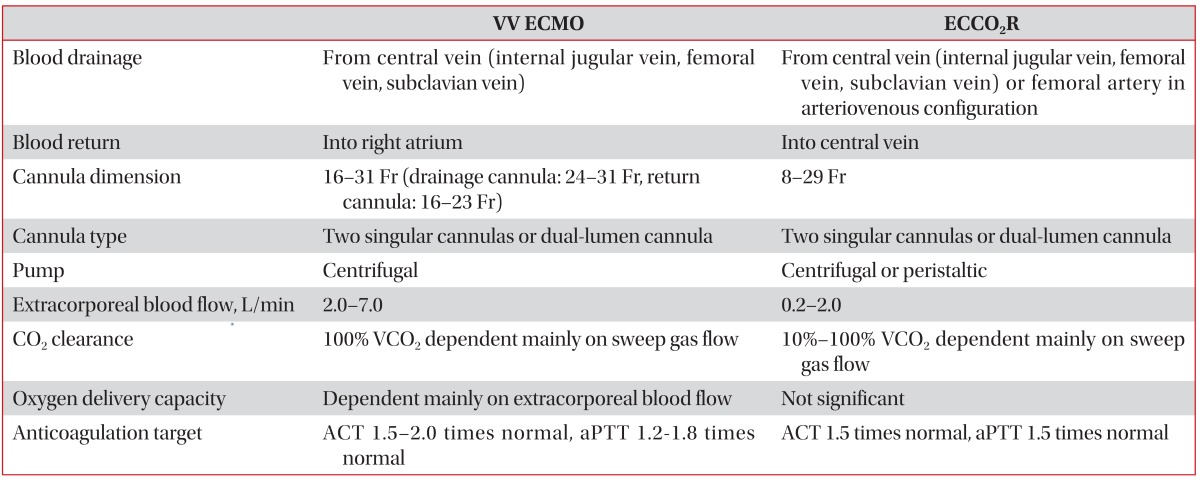
Adopted from Del Sorbo L et al. Lancet Respir Med 2014;2:154-64, with permission of Elsevier3.
ECMO: extracorporeal membrane oxygenation; ECCO2R: extracorporeal CO2 removal; VV: veno-venous; VCO2: CO2 production; ACT: activated clotting time; aPTT: activated partial thromboplastin time.
Table┬Ā2
Characteristics of gas exchange and hemodynamic support during ECLS
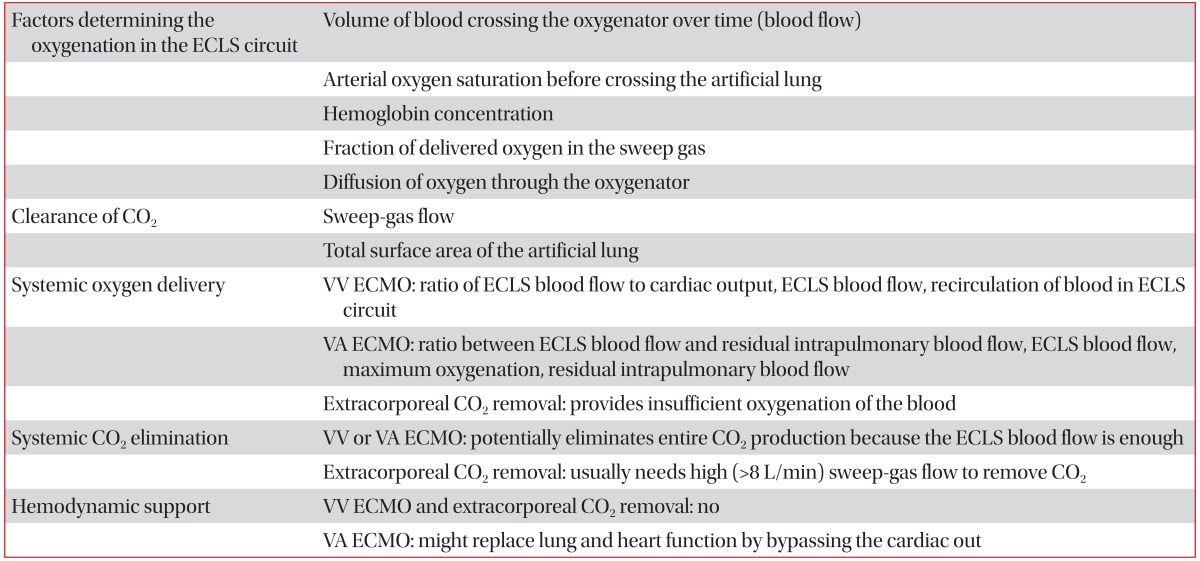
Adopted from Del Sorbo L et al. Lancet Respir Med 2014;2:154-64, with permission of Elsevier3.
ECLS: extracorporeal life support; VV ECMO: veno-venous extracorporeal membrane oxygenation; VA: veno-arterial.
Table┬Ā3
VV ECMO for rescue treatment in patients with acute respiratory distress syndrome3
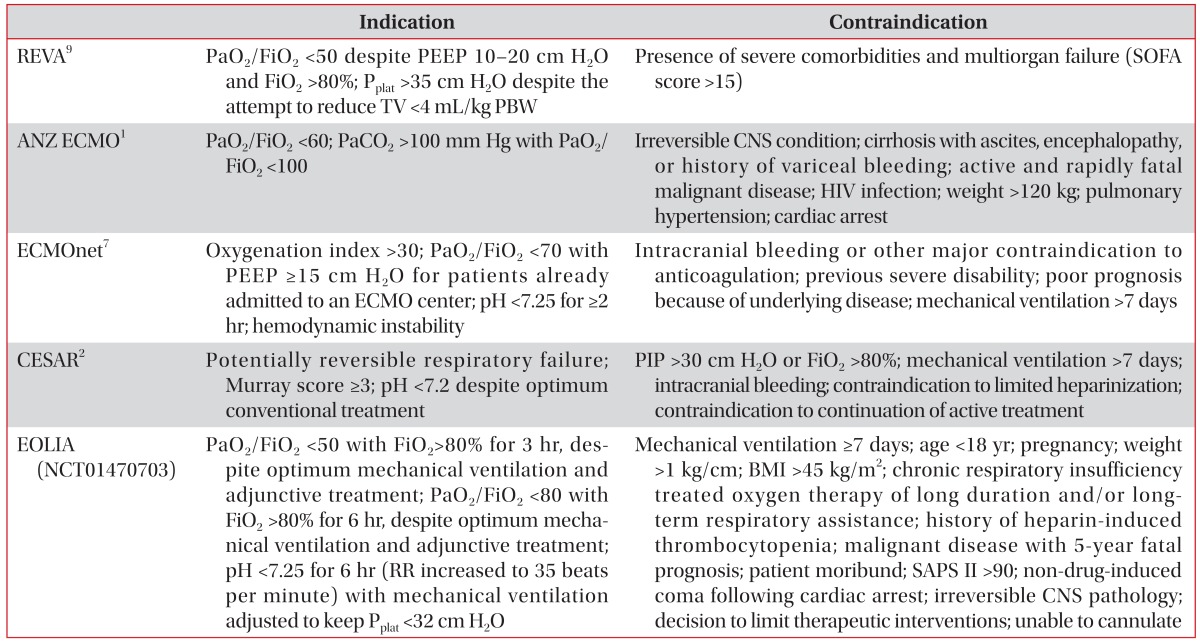
Adopted from Del Sorbo L et al. Lancet Respir Med 2014;2:154-64, with permission of Elsevier3.
VV ECMO: veno-venous extracorporeal membrane oxygenation; PaO2: arterial partial pressure of O2; FiO2: fraction of inspired oxygen; PEEP: positive end-expiratory pressure; TV: tidal volume; PBW: predicted body weight; SOFA: sequential organ failure assessment score; CNS: central nervous system; HIV: human immunodeficiency virus; RR: respiratory rate; BMI: body mass index; SAPS II: Simplified Acute Physiology Score.
Table┬Ā4
Clinical studies of ECLS to prevent ventilator-induced lung injury3

Adopted from Del Sorbo L et al. Lancet Respir Med 2014;2:154-64, with permission of Elsevier3.
ECLS: extracorporeal life support; PBW: predicted bodyweight; Pplat: inspiratory plateau pressure; RR: respiratory rate; NHLBI: National Heart, Lung, and Blood Institute; ARDS: acute respiratory distress syndrome; PEEP: positive end-expiratory pressure; FiO2: fraction of inspired oxygen.
Table┬Ā5
Weaning from ECMO
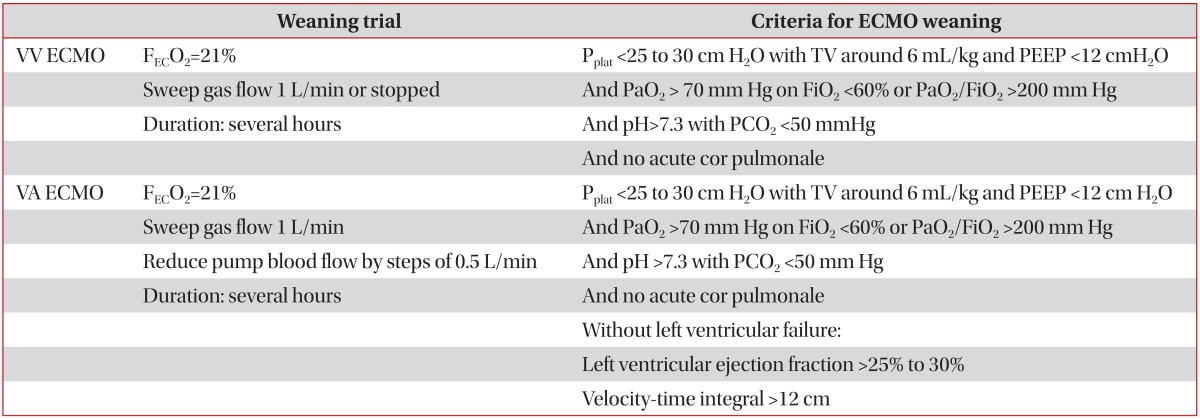
Adopted from Richard C et al. Ann Intensive Care 2014;4:15, according to the Creative Commons License17.
ECMO: extracorporeal membrane oxygenation; VV: veno-venous; FECO2: oxygen fraction delivered by the extracorporeal circuit; Pplat: plateau pressure; TV: tidal volume; PEEP: positive end-expiratory pressure; PaO2: arterial partial pressure of O2; FiO2: fraction of inspired oxygen; PCO2: partial pressure of CO2; VA: venous-arterial.
Table┬Ā6
RESP score
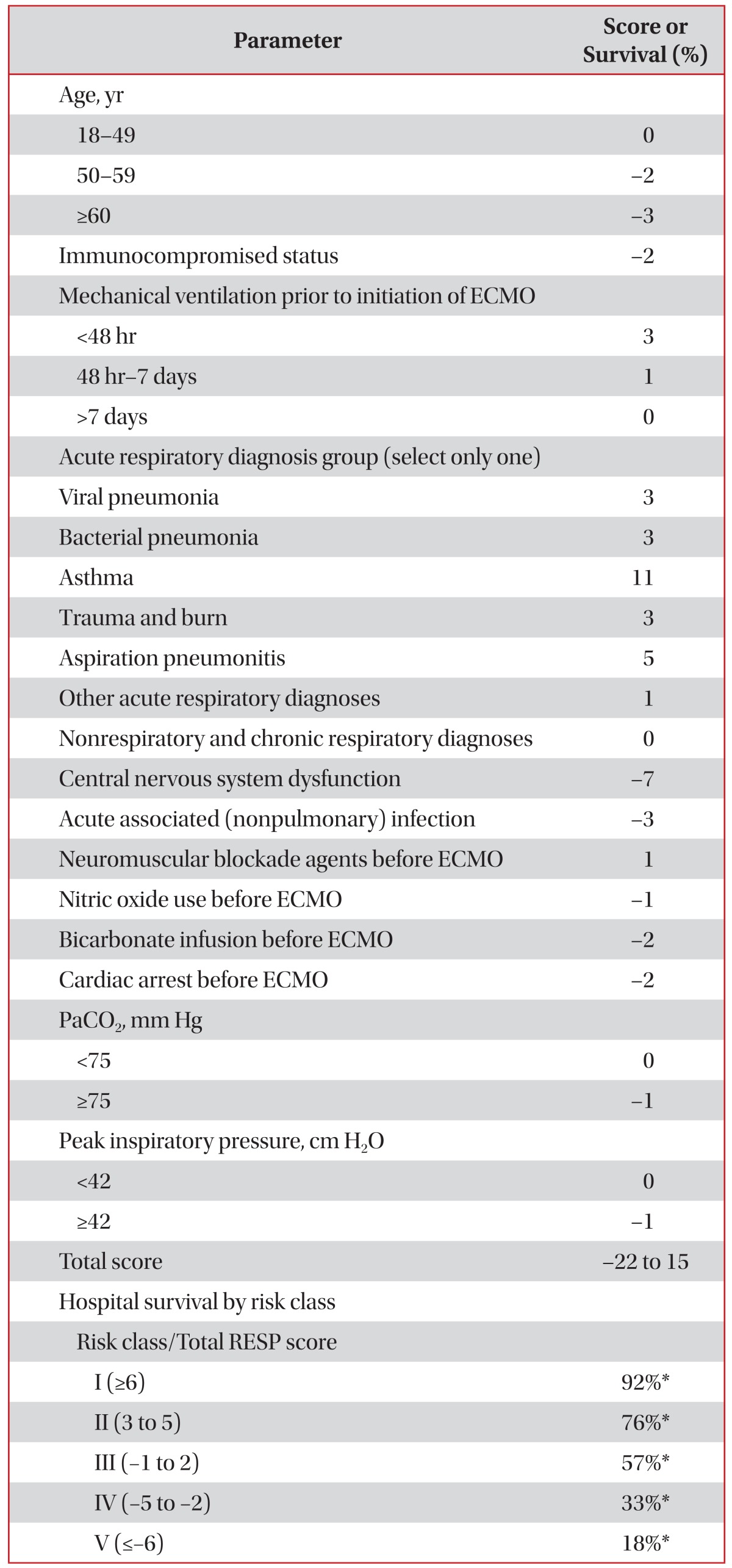
Reprinted with permission of the American Thoracic Society. Copyright ┬® 2015 American Thoracic Society. Schmidt M et al. Predicting survival after extracorporeal membrane oxygenation for severe acute respiratory failure. The Respiratory Extracorporeal Membrane Oxygenation Survival Prediction (RESP) score. Am J Respir Crit Care Med 2014;189:1374-8227. The American Journal of Respiratory and Critical Care Medicine is an official journal of the American Thoracic Society.
*Survival (%).
RESP: Respiratory ECMO Survival Prediction; ECMO: extracorporeal membrane oxygenation; PaCO2:partial pressure of carbon dioxide.


 PDF Links
PDF Links PubReader
PubReader Full text via DOI
Full text via DOI Print
Print Download Citation
Download Citation




